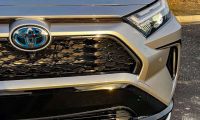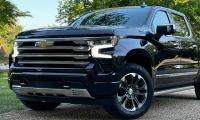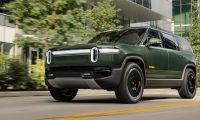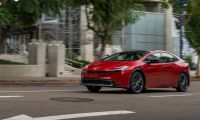A study by the Highway Loss Data Institute (HLDI) finds that electric vehicles (EVs) may be a bit safer than conventionally-powered vehicles. With so many new battery-electric and plug-in hybrid-electric models coming to market in 2021, this will be an interesting trend to watch.
We reached out to Joeseph Young, our go-to expert on auto safety analysis. Mr. Young is the Director of Media Relations for the Insurance Institute for Highway Safety (IIHS). We often ask him for his analysis of a safety-related story before we draw a conclusion or to help validate any conclusions we ourselves draw.

Mr. Young looked over the HLDI study and offered a concise summary. He says, “EVs show significantly lower frequencies of collision and property damage liability insurance claims, indicating that they crash less frequently than their conventional counterparts.” Data from the study show that EV collision coverage claim frequencies are about 20% less than vehicles in the same size segment.

When EVs were new to the market, they tended to be pricey to repair. Mr. Young says, “After adjusting for miles driven, EVs tend to crash less, but historically they’ve been more expensive to fix when they do.” This could be due to shops that repair EVs becoming more familiar with the repair process. However, the study also shows that the cost to repair is now approaching parity with conventional vehicles.
Related Story: Tesla Model S At Bottom of IIHS Test Results – Again
The study did not include any vehicles from Tesla. This separates out the high cost to repair $100K Model S and Model X vehicles that Tesla produces and which tend to be aluminum-intensive, and thus more costly. The study instead focused on more mainstream models by brands such as Toyota, Kia, Hyundai, and Ford.
Related: Ford Mustang Mach-E Looks To Earn Top IIHS Safety Scores Before Tesla Model Y
Mr. Young asked us to be sure that we mentioned the limitations of this study. The models included have evolved rapidly over the past decade, and many are now out of production. Also, advanced driver assist systems may play an unknown role.
What IIHS and HLDI scientists and analysts think helps make EVs safer is that they tend to be among the heaviest vehicles in their size segment, with about 9% added heft. Added mass can be helpful in a number of ways. In addition to offering more overall mass for protection, if the battery is low in the chassis, it may reduce the center of gravity, which has multiple safety benefits.
You can view the full HLDI study here.
John Goreham is a long-time New England Motor Press Association member and recovering engineer. Following his engineering program, John also completed a marketing program at Northeastern University and worked with automotive component manufacturers. In addition to Torque News, John's work has appeared in print in dozens of American newspapers and he provides reviews to many vehicle shopping sites. You can follow John on Twitter, and view his credentials at Linkedin












